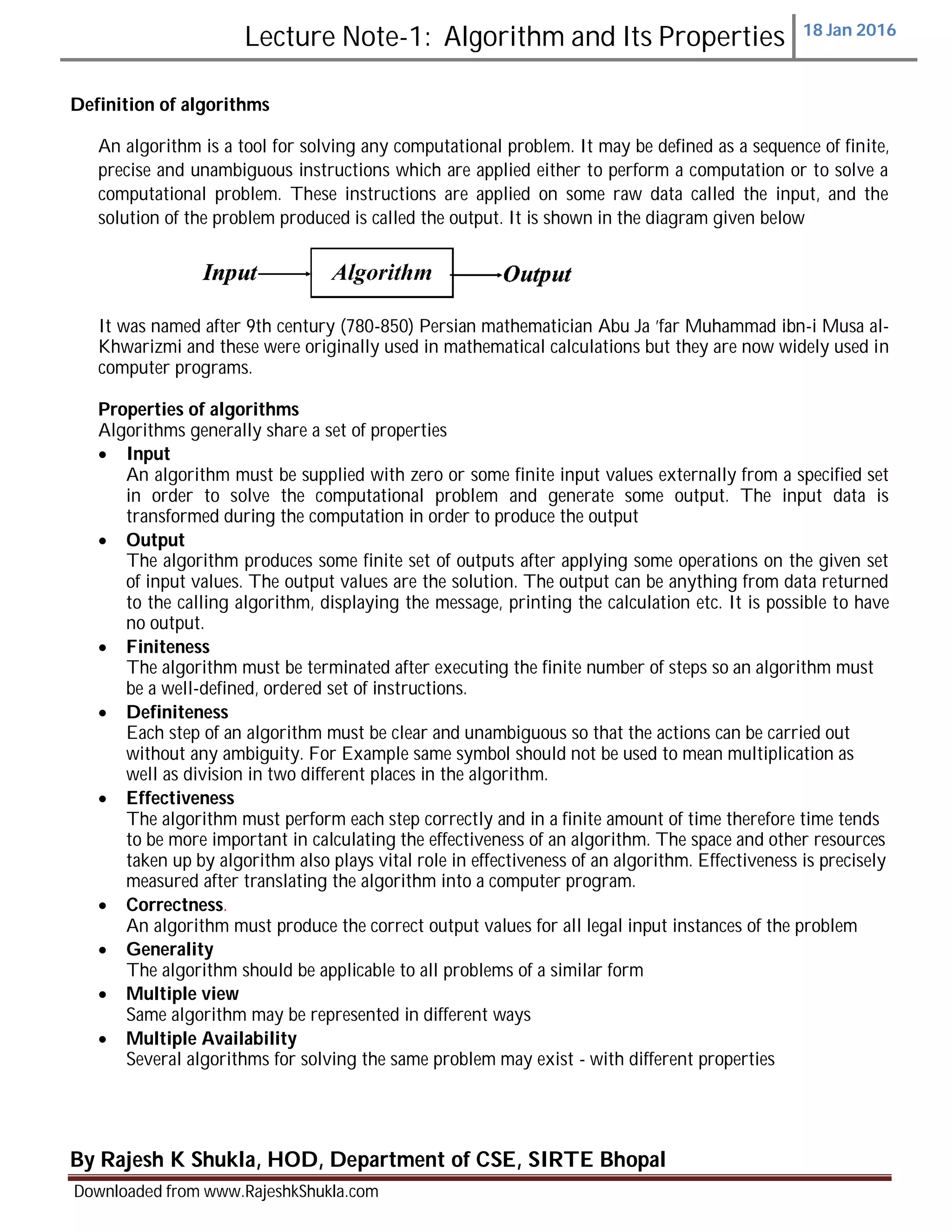
Lecture Note-2: Performance analysis of Algorithms
- 1. Lecture Note-1: Algorithmand Its Properties 18 Jan 2016 By Rajesh K Shukla, HOD, Department of CSE, SIRTE Bhopal Downloaded from www.RajeshkShukla.com Definition of algorithms An algorithm is a tool for solving any computational problem. It may be defined as a sequence of finite, precise and unambiguous instructions which are applied either to perform a computation or to solve a computational problem. These instructions are applied on some raw data called the input, and the solution of the problem produced is called the output. It is shown in the diagram given below It was named after 9th century (780-850) Persian mathematician Abu Ja ’far Muhammad ibn-i Musa al- Khwarizmi and these were originally used in mathematical calculations but they are now widely used in computer programs. Properties of algorithms Algorithms generally share a set of properties Input An algorithm must be supplied with zero or some finite input values externally from a specified set in order to solve the computational problem and generate some output. The input data is transformed during the computation in order to produce the output Output The algorithm produces some finite set of outputs after applying some operations on the given set of input values. The output values are the solution. The output can be anything from data returned to the calling algorithm, displaying the message, printing the calculation etc. It is possible to have no output. Finiteness The algorithm must be terminated after executing the finite number of steps so an algorithm must be a well-defined, ordered set of instructions. Definiteness Each step of an algorithm must be clear and unambiguous so that the actions can be carried out without any ambiguity. For Example same symbol should not be used to mean multiplication as well as division in two different places in the algorithm. Effectiveness The algorithm must perform each step correctly and in a finite amount of time therefore time tends to be more important in calculating the effectiveness of an algorithm. The space and other resources taken up by algorithm also plays vital role in effectiveness of an algorithm. Effectiveness is precisely measured after translating the algorithm into a computer program. Correctness. An algorithm must produce the correct output values for all legal input instances of the problem Generality The algorithm should be applicable to all problems of a similar form Multiple view Same algorithm may be represented in different ways Multiple Availability Several algorithms for solving the same problem may exist - with different properties
